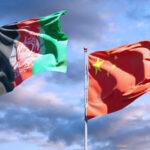Beijing’s Afghan Future
While the West devastated Afghanistan through years of war, drone strikes, and foreign occupation, China took a different path—peaceful, strategic, and considerate. As United States soldiers dropped bombs and NATO scrambled for exits, China was building something more enduring: partnerships, trust, and lasting collaborations—not with governments or factions but with the people themselves.
China never intervened in internal disputes. It didn’t back one militia over another or try to reshape Afghanistan in its own image. Instead, it reached out to Afghan farmers, miners, traders, and workers—those who hold a stake in the country’s future. China offered trade, development, investment, and a shared vision rooted in mutual benefit.
Building Bridges, Not Battlefields
On May 21, a significant meeting in Beijing brought together the foreign ministers of China, Pakistan, and Afghanistan. This marked a strategic turning point: the decision to extend the China-Pakistan Economic Corridor (CPEC) into Afghanistan. This move can not only benefit the region but also provide Afghanistan with a genuine chance at peace on its own terms.
CPEC, a flagship project of China’s Belt and Road Initiative, has already transformed Pakistan with infrastructure development. Now, Afghanistan is set to join this evolving network as an essential partner, focusing on both physical and economic integration.
A New Vision for Afghanistan
China’s commitment to allowing Afghanistan to rebuild itself based on its own terms sets it apart. The emphasis is on economic alignment rather than political alignment, fostering regional cooperation and development.
With regional projects gaining momentum and a focus on non-interference in Afghanistan’s internal affairs, this partnership signals a shift towards peace-building through collaboration rather than coercion.
Transforming Afghanistan’s Future
Through significant investments and infrastructure projects, Afghanistan is poised to become a pivotal hub connecting various regions. China’s people-centric approach aims to empower Afghans, restore trade routes, and pave the way for shared prosperity and peace.
This collaborative effort not only offers economic opportunities but also respects Afghan traditions, values, and social norms. It envisions a future where Afghanistan emerges as a bridge for connectivity and cooperation, leaving behind its war-torn past.


